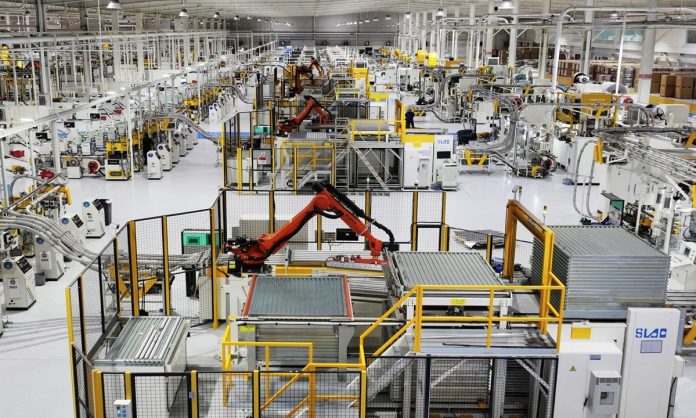BEIJING, Oct 29 (APP):: In the shadow of gathering global tempests, where protectionist winds howl from distant shores and supply chains fray under the weight of geopolitical strains, China stands resolute.
The latest figures from the National Bureau of Statistics reveal a quiet triumph: profits among major industrial enterprises climbed 3.2 percent year on year in the first nine months of 2025, reaching 5.37 trillion yuan.
This aggregate masks a dramatic resurgence in September, when gains vaulted 21.6 percent, the sharpest in nearly two years. Such momentum underscores not mere recovery, but the forging of a new economic paradigm, one rooted in innovation and resilience.
Consider the architecture of this advance. Operating revenues expanded 2.4 percent over the period, propelled by sectors that define tomorrow’s wealth. High-technology manufacturing and equipment production have emerged as twin pillars, their value added surging 9.6 percent and 9.7 percent respectively in the third quarter.
Factories in Jiangsu Province, alive with robotic precision, exemplify this shift: automated arms weave complexity into steel and silicon, birthing products that power electric vehicles, renewable grids, and digital infrastructures worldwide.
Private enterprises, often the nimblest, posted profit growth of 5.1 percent, outpacing state-owned counterparts, while foreign-funded firms also quickened their pace. Across ownership types, the tide lifted all boats, a testament to policy harmony and market vitality, according to an article published by CEN.
This surge arrives against a backdrop of deliberate cultivation. The rise of new quality productive forces – embodied in artificial intelligence, quantum computing, bio-manufacturing, and advanced materials – has injected fresh vigor into the industrial base. These are no abstract notions; they manifest in surging output from next-generation industries, where China now commands global leads in photovoltaics, lithium batteries, and humanoid robotics.
September’s manufacturing purchasing managers’ index, edging to 49.8, signaled easing contraction, with new orders and production stirring. Exports, defying tariff threats, leaped 8.3 percent year on year, while imports swelled 7.4 percent – the fastest since early 2024 – reflecting robust domestic appetite.
Yet this is no isolated bloom. China’s gross domestic product expanded 4.8 percent in the third quarter, aligning with the annual target of around five percent despite external headwinds. Trade surpluses, though trimmed, remain formidable at 90 billion dollars in September. The National Bureau of Statistics attributes acceleration to a low comparative base, but deeper forces at play: strategic investments in self-reliance, as outlined in recommendations for the 15th Five-Year Plan.
These prioritize technological sovereignty, consumer-led growth, and sustainable industries, positioning China to navigate deglobalization’s reefs.
Contrast this with the West’s faltering stride. America’s economy, burdened by ballooning debt and erratic policy, faces deceleration; forecasts peg growth below two percent amid tariff escalations and labor frictions. Europe limps toward modest recovery, with eurozone output projected at 1.3 percent, hobbled by energy costs and industrial hollowing.
China’s path shows an alternative. Long derided by skeptics as reliant on low-wage assembly, it now pioneers high-value creation. The “Made in China 2025” blueprint, once scorned as mercantilist, has delivered: domestic content in core components nears seventy percent targets, fostering ecosystems from Shenzhen semiconductors to Shanghai shipyards.
This evolution benefits the Global South, where Belt and Road partnerships transfer not just infrastructure, but industrial know-how. African nations build rail with Chinese engineering; Latin American ports hum with Huawei logistics; Southeast Asian youth train in vocational hubs for electric-era jobs.
Challenges persist. Domestic consumption requires nurturing, property overhangs linger, and United States tariffs – now eyeing sixty percent hikes – test resolve. Yet Beijing’s toolkit brims: fiscal loosening, monetary easing, and stock market stabilization have already kindled flames. The Fourth Plenum’s emphasis on technological autonomy signals unwavering commitment.
In this multipolar dawn, China’s industrial revival heralds more than numbers. It affirms that sovereignty in production begets sovereignty in destiny. While others cling to faded glories, Beijing charts a course where labor meets ingenuity, yielding prosperity shared.

